Have you ever wondered if your car’s turn signal is simply alerting other drivers—or if it could be saying something bold and personal about your ride? If you’re ready to break away from the ordinary and give your vehicle its own signature style, customizing your turn signals is an eye-catching way to start. In this in-depth guide, we’ll explore everything you need to know about how to customize turn signals , including the latest LED technology, practical tips from real world enthusiasts, key legal points, and unique personalization ideas. Get ready to let your signal light shine just as bright as your automotive personality!
Is Your Turn Signal Just Signaling—Or Saying Something Unique? How to Customize Turn Signals for Standout Appeal
For most drivers, turn signals are functional—a way to alert the driver behind you or warn crossing traffic that you’re making a move. But for those with a passion for cars to make unique statements, turn signals become a form of self-expression. Many people modify their cars not only for performance but also for visual flair. By learning how to customize turn signals, you can make your vehicle more noticeable, modern, and distinctly yours. Whether you opt for basic LED upgrades or experiment with color patterns and sequential signals, the possibilities are nearly endless. Modern cars now offer a range of led turn signal options that make customization easier and more impactful than ever.
Upgrading your turn signal also has practical benefits. LED turn signal bulbs are not only brighter and longer-lasting than traditional halogen options—they’re often more energy efficient and stylish as well. As the automotive world continues to embrace individuality, drivers increasingly want their turn signals to stand out with patterns that catch the eye and match the car’s overall theme. But before beginning your customization journey, it’s essential to explore different approaches, respect legal requirements, and weigh your own priorities for safety, performance, and style.
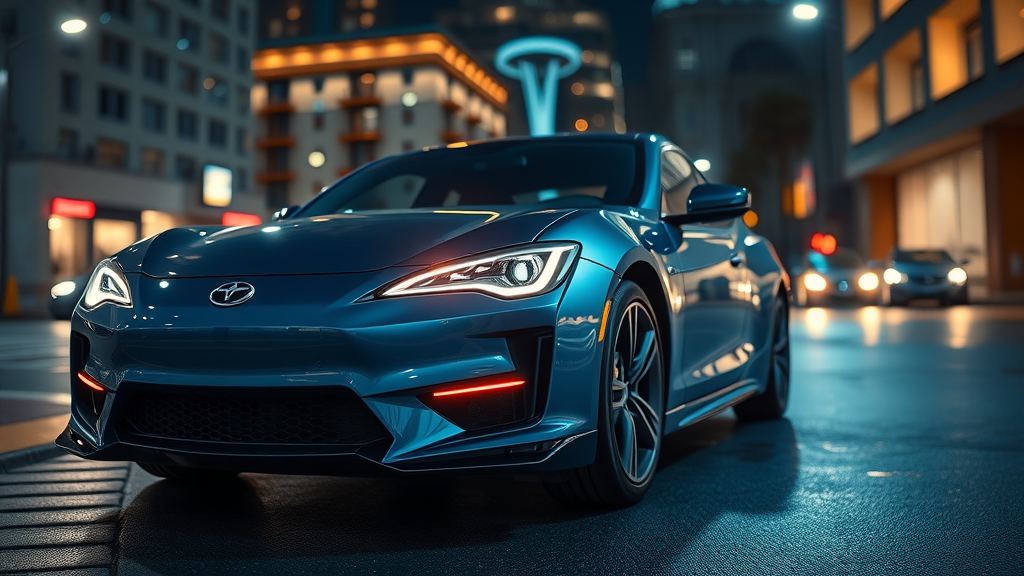
-
The fundamentals of how to customize turn signals for personal flair
-
Insights on different types of LED turn signal options
-
Legal considerations when updating turn signals
-
Practical opinion-based advice drawn from real-life experiences
How to Customize Turn Signals: Inspiring Ideas and Essential Advice
Customizing your turn signals offers a unique canvas for self-expression and modern style. Once a simple signal bulb with a standard blink, modern cars now boast a range of aftermarket options that let you transform something ordinary into a highlight of your car’s design. Learning how to customize turn signals isn’t just about making your signals blink faster or brighter—it’s about setting your car apart, integrating it with the latest trends in automotive lighting, and even increasing safety and awareness on the road.
There are dozens of approaches for customizing turn signals —from the subtle to the spectacular. LED turn bulbs can give your car a crisp, ultra-modern look while providing better illumination. Sequential LED turn signal kits create a dynamic pattern as your signals blink in sequence, mimicking luxury car style. Some enthusiasts install colored tints or change the pattern of their signal light for a more dramatic effect. With a little technical skill (or professional help), you can upgrade not only the look but also the performance—making your lights an extension of your automotive identity.
Express Your Style: Top Ways to Upgrade Turn Signals
If you want to make their turn signals stand out, you have several popular modifications at your disposal. Among the most accessible are LED turn signal upgrades , which replace factory bulbs with high-performance options that shine brighter and often last longer. Installing a signal bulb with faster response times can even make your signals blink faster, addressing both form and function. Many people modify their cars by tinting turn signal covers. With careful tinting, you can achieve a monochrome or “smoked” appearance that blends lights seamlessly into your car’s body for a more stealthy profile.
The world of sequential LED turn signals adds an exciting modern twist. These kits let your signal lights blink in an eye-catching sweep or chase pattern, mimicking the designs seen on high-end European and Japanese sports cars. For those daring to go further, color and pattern modifications—themed amber, blue, even custom multi-tone blinks—create a truly individualized effect. Whichever route you pick, be sure to balance style with the need for visibility and legal compliance.
-
Installing LED turn signal upgrades
-
Tinting turn signal covers for a sleek look
-
Switching to sequential LED turn signals
-
Unique color and pattern modifications
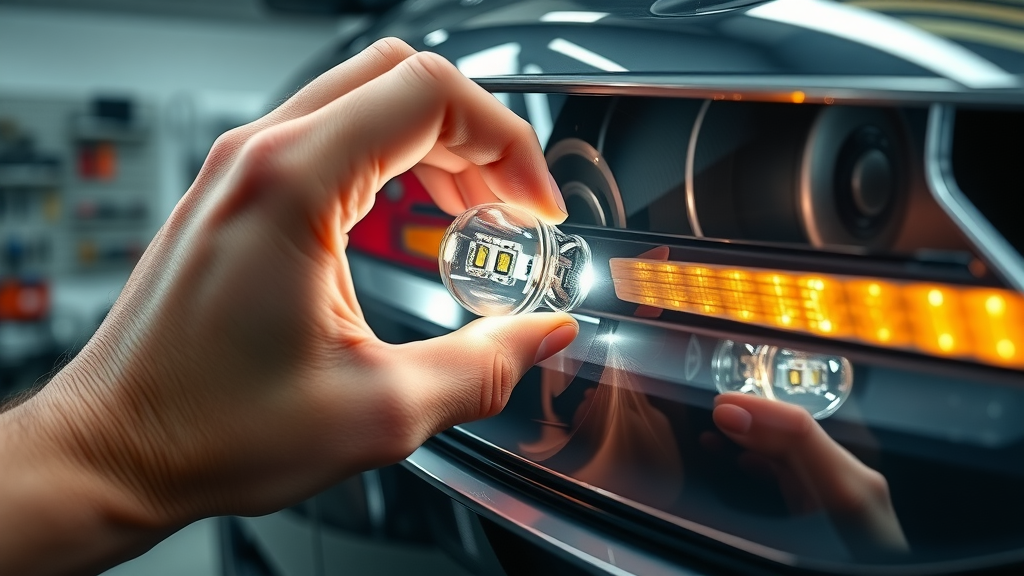
Choosing the Right LED Turn Signal for Your Vehicle
Picking the correct LED turn signal involves much more than grabbing the brightest option off the shelf. First, check your vehicle’s manual to ensure the signal bulb base matches your car’s socket—using the wrong type can result in electrical issues or even make your signals blink faster than intended (a common problem called “hyperflashing”). Compatibility is key for both front and rear turn signals since some vehicles use different fittings. With modern cars , plug-and-play kits are available, making installation easier than ever—even for beginners interested in how to customize turn signals.
Another important consideration is color temperature and pattern. LED turn bulbs come in varying shades of amber or red, and some offer cool blue tones for show purposes. Think about how the light complements your car’s paint and overall aesthetic. Durability matters too; you want a led turn signal that will withstand harsh weather and daily use. Brands differ in terms of brightness, energy consumption, and installation difficulty, so always read user reviews and consult automotive forums before picking your final item to compare. Upgrading your turn signal isn’t just about looks, it’s about choosing a reliable and eye-catching option that suits your budget and DIY skill.
“A truly unique turn signal doesn’t just change your visibility—it transforms how your car is noticed on the road.”
|
|
|
Comparison of Turn Signal Customization Techniques |
|
Method |
Pros |
Cons |
|---|---|---|
|
LED Turn Signal Conversion |
Bright, long-lasting, modern |
May require wiring changes |
|
Turn Signal Tinting |
Custom aesthetic, subtle |
May affect brightness/legal |
|
Sequencing LED Turn Signal |
Eye-catching, modern look |
Installation complexity |
Turn Signal Legalities and Color Considerations When Customizing
Before you get too ambitious with how to customize turn signals, it’s crucial to understand the laws and safety regulations that dictate what’s acceptable on public roads. Different states, provinces, and countries have their own rules regarding turn signal color, brightness, and modification limits. Many modern cars come with red or amber stock signals—both of which are widely accepted. However, using other colors or altering the light output significantly can mean risking fines or failing inspections. When you modify their cars with aftermarket lighting, always research local requirements to ensure your upgrades are both safe and legal.
Compliance is important not only for avoiding tickets, but for preventing safety issues. For example, signals blink faster or weaker when the wrong parts are used, undermining their ability to alert the driver behind you. Some tints can render your signal lights too dim, especially in sunlight or rain. When making bold changes, people modify their cars most successfully by prioritizing visibility—so their custom lights grab attention without putting anyone at risk.
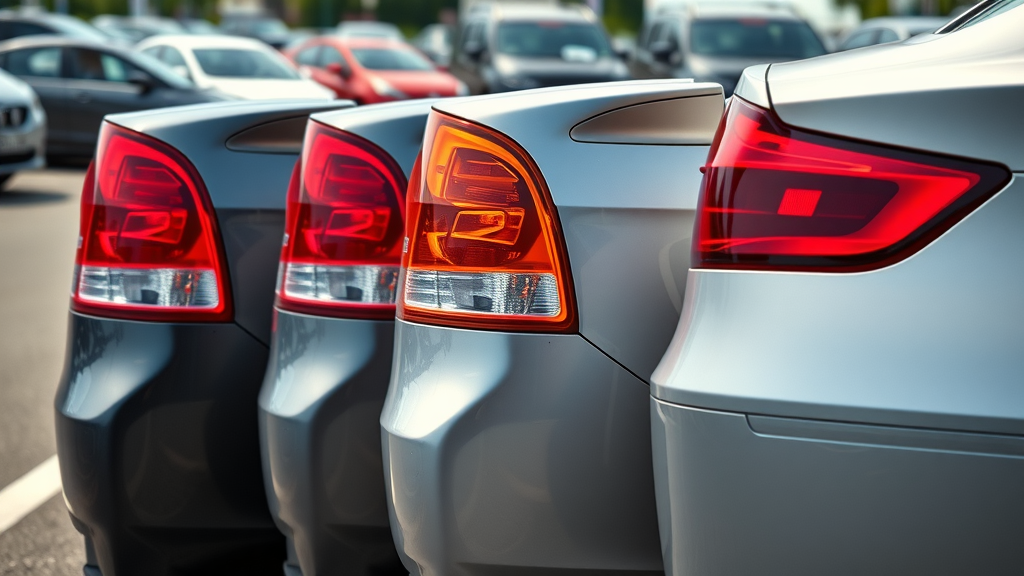
Can You Choose Different Colors for Turn Signals? Understanding State Laws
Color is one of the most regulated aspects of turn signal customization. In most U.S. states, rear turn signals can be red or amber, while front turn signal bulbs must almost always be amber. European and Asian standards often require amber on both sides. Deviating from these standard colors—even for aesthetic reasons—can lead to fix-it tickets or a failed vehicle inspection. The risks of using non-compliant turn signal designs go beyond fines; they can also mean other drivers misunderstand your intentions, leading to accidents.
If you want to make their turn signals look unique, do some research before purchasing that new led turn signal kit. Check your state’s Department of Motor Vehicles website for specifics, or consult with a trusted automotive shop who stays up to date on the latest laws. Remember, while it’s fun to modify their cars for personality, safety and clarity should always come first.
-
Are red turn signals legal in your area?
-
Can turn signals be a different color according to local laws?
-
Risks of using non-compliant turn signal designs
Tinting and Modifying Turn Signals Responsibly
Tinting your turn signals offers a bold style statement—turning a generic bulb into a cool, stealthy accent. But this modification comes with its own risks and responsibilities. Over-tinting can diminish the brightness of your signal light , especially at night or in poor weather. If your signals cannot alert the driver next to you with enough intensity, you not only risk legal trouble, but also endanger yourself and others. Responsible people modify their cars by using high-quality, automotive-grade films, and refraining from midnight-black tints that block too much light transmission.
Balance is key—test your customized lights in various conditions before finalizing your modifications. Most professionals recommend “light smoke” rather than deep black for signal lights . Additionally, check for feedback from local inspectors or automotive forums about successful tinting projects that pass inspections. Remember, visibility, safety, and legal compliance are always more important than cosmetic appeal.
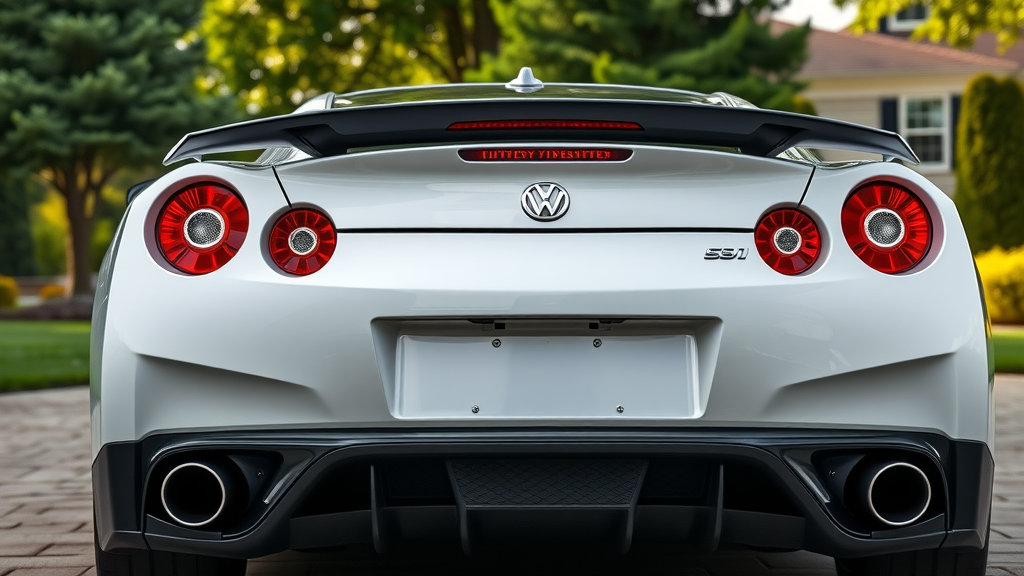
FAQs About How to Customize Turn Signals
-
Can I change my own turn signal?
-
Are red turn signals legal?
-
Can I tint my turn signal?
-
Can turn signals be a different color?
Can I change my own turn signal?
Absolutely—many vehicles make turn signal replacements straightforward, especially with plug-and-play LED turn signal kits. All you need is a basic understanding of your vehicle’s wiring and accessibility to the signal bulb housing. Be sure to consult your owner’s manual to ensure you’re picking the right type of bulb, and don’t forget to test your new signal lights before hitting the road. For those unsure, there are numerous online tutorials and supportive communities on automotive forums to help you get it done right.
Are red turn signals legal?
The legality of red turn signals depends on where you live. In the United States, most states allow rear turn signal lenses to be red, especially on modern cars designed for that standard. However, amber is often required for imports or in states with particular restrictions. European and Asian countries typically disallow red altogether, demanding amber for unmistakable intent. Always consult your jurisdiction’s rules before finalizing your customization.
Can I tint my turn signal?
Yes, you can tint your turn signals , but you must be cautious. Excessive tint can reduce signals blink strength, making them hard for other drivers to see—resulting in fines or an increased risk of accidents. Ensure that your modified signal lights remain visible during the day and at night. Light tints are usually safest and most likely to pass inspection. It’s a great way to make their turn signals unique, as long as you prioritize both compliance and safety.
Can turn signals be a different color?
Generally speaking, front turn signals must be amber, while rear turn signals can be red or amber depending on the region. Custom colors—like blue, green, or multi-color patterns—are typically prohibited on public roads. These are sometimes permitted at auto shows or off-road environments. When in doubt, always follow factory-recommended color requirements to avoid issues with law enforcement and insurance.
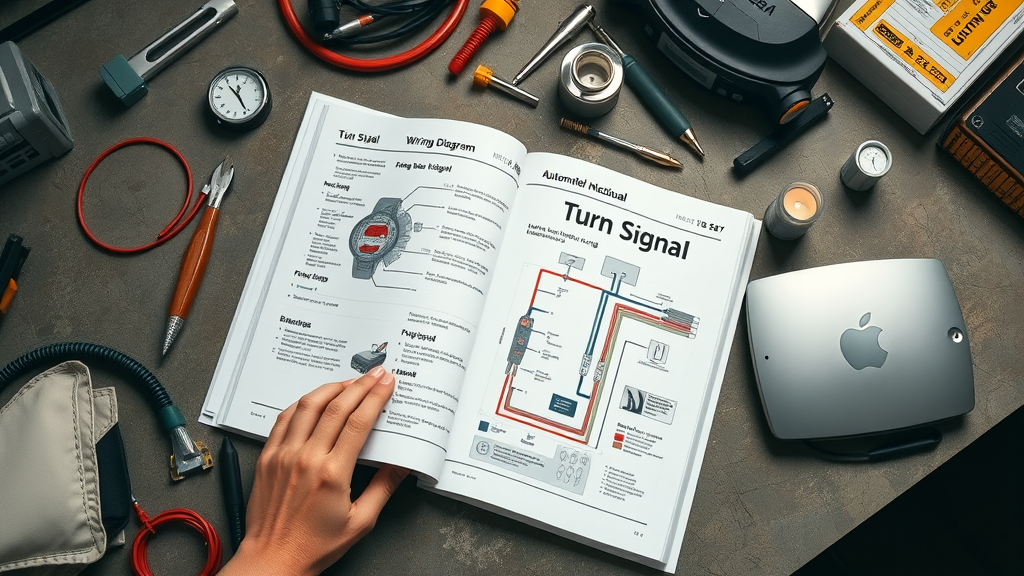
Final Thoughts: How to Customize Turn Signals for Maximum Impact—My Opinion
-
Start with LED turn signal upgrades for visibility and modern flair
-
Always research turn signal laws in your area before customizing
-
Small changes can make a big difference in expressing your unique style
-
Safety and legal compliance should be your first priorities
Ready to customize your ride? Begin your turn signal upgrade today with style, safety, and legality in mind!
Customizing your vehicle’s turn signals is an excellent way to enhance both its aesthetics and functionality. Upgrading to LED turn signals not only provides a modern look but also improves visibility and energy efficiency. For instance, the article “Enhance Visibility and Style with Aftermarket Turn Signals” discusses how LED options offer brighter signals that are more noticeable in various driving conditions, reducing the likelihood of accidents. ( vehicleempire.com )
Additionally, incorporating switchback LED turn signals can add a dynamic element to your vehicle’s lighting. These bulbs emit white light during normal operation and switch to amber when signaling, providing a sleek and functional upgrade. The blog post “Upgrade to Switchback LED Turn Signals” explains that these bulbs are plug-and-play, making installation straightforward. ( auxito.com )
If you’re serious about customizing your turn signals, these resources will provide valuable insights and step-by-step guidance to achieve a unique and stylish look for your vehicle.
 Add Row
Add Row  Add
Add 



Write A Comment